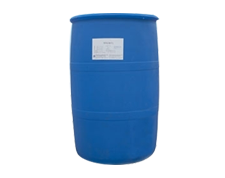In the formula of degreasing agent, defoaming mainly starts from two aspects: adding defoaming agent or adjusting formula. The commonly used defoamers are liquids which are easy to spread on the surface of bubbles. When the defoamer spreads on the liquid surface of the bubble film, it will take away the liquid from the adjacent surface layer and make the liquid film thin locally, so the liquid film breaks to achieve the purpose of defoaming. In general, the faster the defoamer spreads on the surface, the stronger the defoaming effect. Most of the liquid which can spread on the surface and has defoaming effect has low surface tension and is easy to be adsorbed on the surface of the solution. On the one hand, it takes away the surface liquid and on the other hand, it is easy to spread. The bubble molecules in the surface film are replaced by bubbles.

The commonly used defoamers are: 1) alcohols, lower alcohols have poor defoaming durability and no defoaming effect after volatilization. Higher alcohols (such as octanol and Nonanol) are better than lower alcohols such as butanol and ethanol, but they need to be added constantly. Higher alcohols (such as oleanols) have very effective defoaming effect. They are not volatile, but also insoluble in water. They need to be added together with lower alcohols. ② Phospholipids. ③ Silicone oil, such as tributyl phosphate, has no lasting defoaming effect. The surface tension is very low, easy to spread on the solution surface, it is a very effective defoamer. The use of low concentration, as long as tens of parts per million to see the effect. The disadvantage is that the price is expensive, and the cleaning after water is not thorough, which will affect the appearance and adhesion of the coating. (4) polyether, a widely used type of defoamer, can inhibit foam re production. It is widely used in the pretreatment line. Volatile oil solvent, such as pine perfume or kerosene, is added to 0.02~0.1% of the mass fraction of the cleaning solution. When these solvents evaporate, the bubbles will burst. This defoamer is also not durable. ⑥ Alkaline degreaser containing surfactant is widely used in some antirust oil and petroleum by-products, and its degreasing efficiency is also very high. Alkaline inorganic substances (sodium carbonate, sodium silicate, sodium polyphosphate, etc.) are often called detergent aids.
Surfactant has many functions, such as wetting, emulsifying, solubilizing, foaming, flocculation and so on. In order to make the surfactant play a certain role, we must choose a suitable surfactant to use, which can be considered with the help of HLB value. The concept of HLB value is: HLB = hydrophilicity of hydrophilic group / lipophilicity of lipophilic group.
When the micelle concentration is higher than the critical micelle concentration, it is like adding many "bags" to the solution, and the insoluble oil is loaded into "bags" to produce solubilization. The smaller the CMC is, the higher the surface activity is. The size of CMC is related to its structure and the degree of its parents
① The longer the hydrophobic chain is, the easier it is to form micelles and the smaller CMC is. ② The stronger the hydrophilic group is, the more the charge is, the greater the electrostatic repulsion is, the less likely it is to form micelles, and the larger the CMC is. So the order of cmc value is: ionic > amphoteric > nonionic.
Generally, the cmc value of surfactants is very low, and their mass fraction is mostly in the range of 0.02% ~ 0.4%. When surfactant is used, its concentration must be higher than CMC in order to give full play to its performance.
Foam and defoaming, the surface tension of the degreasing solution containing surfactant is very low, and the interface energy is small. So when the air is mixed into the solution, the surfactant molecules will be adsorbed on the gas-liquid interface in a certain order, so that the bubbles will have a certain viscosity and tend to be stable. A proper amount of foam can help the effect of suspension oil pollution. However, if the bubble is too much, the cleaning machine will emerge. Not only will it pollute the site, but also cause the loss of degreasing fluid, the liquid level will decrease, and the liquid level will decrease and the foam will be too much. Therefore, foam content must be controlled.